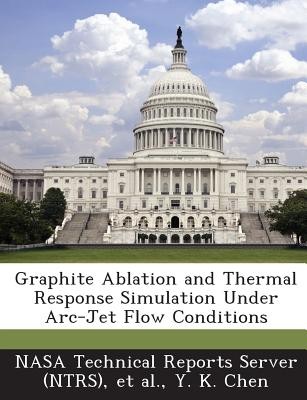
- We will send in 10–14 business days.
- SAVE -10% with code: EXTRA
Graphite Ablation and Thermal Response Simulation Under ARC-Jet Flow Conditions (e-book) (used book) | bookbook.eu
Reviews
Description
The Two-dimensional Implicit Thermal Response and Ablation program, TITAN, was developed and integrated with a Navier-Stokes solver, GIANTS, for multidimensional ablation and shape change simulation of thermal protection systems in hypersonic flow environments. The governing equations in both codes are demoralized using the same finite-volume approximation with a general body-fitted coordinate system. Time-dependent solutions are achieved by an implicit time marching technique using Gauess-Siedel line relaxation with alternating sweeps. As the first part of a code validation study, this paper compares TITAN-GIANTS predictions with thermal response and recession data obtained from arc-jet tests recently conducted in the Interaction Heating Facility (IHF) at NASA Ames Research Center. The test models are graphite sphere-cones. Graphite was selected as a test material to minimize the uncertainties from material properties. Recession and thermal response data were obtained from two separate arc-jet test series. The first series was at a heat flux where graphite ablation is mainly due to sublimation, and the second series was at a relatively low heat flux where recession is the result of diffusion-controlled oxidation. Ablation and thermal response solutions for both sets of conditions, as calculated by TITAN-GIANTS, are presented and discussed in detail. Predicted shape change and temperature histories generally agree well with the data obtained from the arc-jet tests.
EXTRA 10 % discount with code: EXTRA
The promotion ends in 22d.13:51:48
The discount code is valid when purchasing from 10 €. Discounts do not stack.
- Author: Y K Chen
- Publisher: Bibliogov
- ISBN-10: 1289165599
- ISBN-13: 9781289165598
- Format: 18.9 x 24.6 x 0.1 cm, minkšti viršeliai
- Language: English English
The Two-dimensional Implicit Thermal Response and Ablation program, TITAN, was developed and integrated with a Navier-Stokes solver, GIANTS, for multidimensional ablation and shape change simulation of thermal protection systems in hypersonic flow environments. The governing equations in both codes are demoralized using the same finite-volume approximation with a general body-fitted coordinate system. Time-dependent solutions are achieved by an implicit time marching technique using Gauess-Siedel line relaxation with alternating sweeps. As the first part of a code validation study, this paper compares TITAN-GIANTS predictions with thermal response and recession data obtained from arc-jet tests recently conducted in the Interaction Heating Facility (IHF) at NASA Ames Research Center. The test models are graphite sphere-cones. Graphite was selected as a test material to minimize the uncertainties from material properties. Recession and thermal response data were obtained from two separate arc-jet test series. The first series was at a heat flux where graphite ablation is mainly due to sublimation, and the second series was at a relatively low heat flux where recession is the result of diffusion-controlled oxidation. Ablation and thermal response solutions for both sets of conditions, as calculated by TITAN-GIANTS, are presented and discussed in detail. Predicted shape change and temperature histories generally agree well with the data obtained from the arc-jet tests.


Reviews